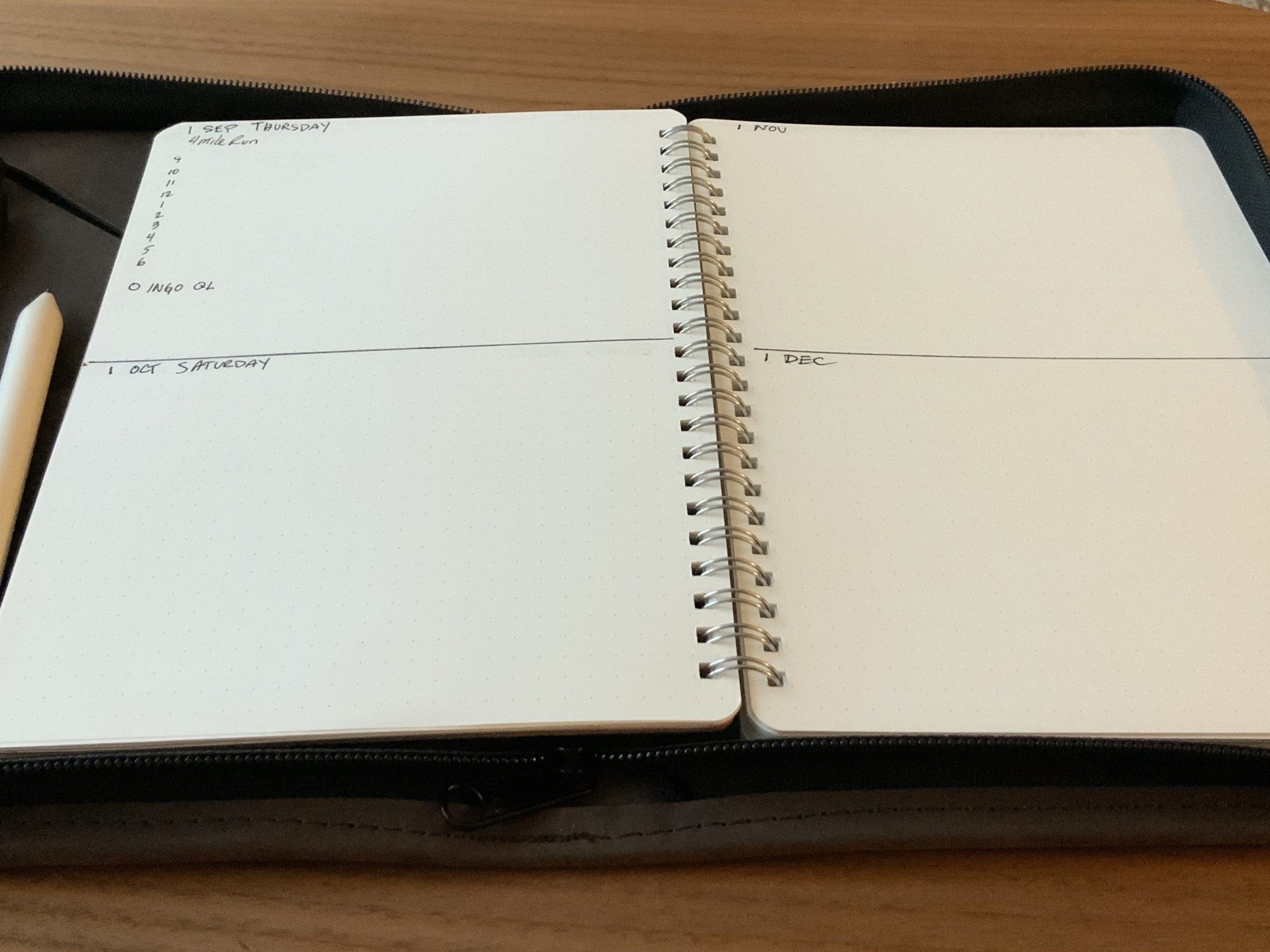A few weeks ago, I backed a Kickstarter for a ”Day-based Journal”. The idea is that each spread of two pages represents a day of the month. For example, when you open it up, the left page has boxes for Jan 1, Feb 1, March 1, April 1, May 1, and June 1. The right-hand-side has July 1 … December 1. So, to journal in January, you turn pages for 31 days and then go back to page 1 to start February. You go back to page 1 to start March, and you can see each day in January and February as you progress.
This has two effects:
- You see your notes over and over (this reminds me of spaced repetition)
- You can see monthly progress and eventually a years worth of progress
I love the idea and hope it gets funded, but in the meantime, I’ve started designing a riff on this idea that I will probably print out for 2023 on LuLu.
As a prototype, I drew something similar to the Kickstarter for 62 pages of my current blank journal to cover the rest of the year (Sep-Dec).

Since that’s just four months, each box is much bigger — half a page each month to make up the two-page spread. For me, I think that’s the minimum size. I don’t think I could use the orignal Day-based journal as a primary way to journal, since I need space to do a time block for the day.
The next thing I noticed was that each day was a different day of the week. That is mentioned as a plus in the Kickstarter, but I think in weeks. So, for me, it would be much more useful if each day shown on the spread were the same day of the week. My Mondays are very different from my Fridays, and the weekend is nothing like a weekday.
So I started to sketch out what a 2023 Week-based ”Recurring” Journal might look like.
My solution so far is to run 2023 as 4 sets of 13 weeks. That’s 364 days, and since Jan 2 is a Monday (and I start my week on Mondays), I’ll treat Jan 1 as a special day and then make 2-page spreads for the rest of the year where each box is 13 weeks apart.
One downside is that they are not aligned to months or quarters, but that’s just the nature of weeks, and I want to embrace weeks. I decided to further sub-group the 13 weeks as 4, 4, and 5 week blocks. That’s almost a month, and while it’s not ideal that they are uneven, I am also embracing the 13, so I have to accept its primeness.
Also, you are only revisiting your notes every 13 weeks instead of every month. To address this there will be 28 summary pages with 13 boxes where you try to get the essence of the day. To get 13 equal sized boxes, I’ll borrow from Betsy Ross and just use horizontal stripes. I think this would be the best way to use the original Kickstarter journal.
I’m currently building a spreadsheet where I can plan out what each page of the journal will be. In addition to daily pages, there will be pages for planning and retros. I also want enough blank pages for random note taking. So far it’s over 300 pages.
When that’s done, I’m going to build a python script to generate the PDF for the interior pages. I will open-source it, so if you are interested, then watch this space.